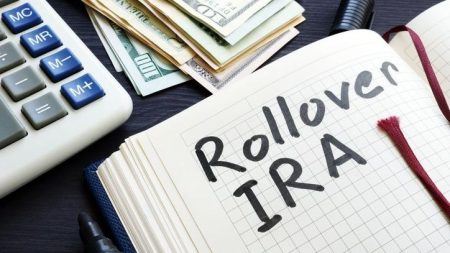When you’re in your 30s, retirement may be far from your mind. But saving for retirement in your 30s is highly beneficial, especially if you’re trying to catch up. At this stage of life, compound interest has plenty of time to help grow your savings. Regardless of how much you already have saved, there are several strategies you can use in your 30s to catch up on retirement savings or contribute to the nest egg you already have. Opening the right accounts, limiting your spending and working with a financial advisor are just a few of these strategies. If you’re ready to catch up on retirement savings, continue reading for five tips that can help.
A financial advisor can help you crunch the numbers and figure out how much you need to save to fund your ideal retirement. If you’re ready to start seriously planning for retirement, find a financial advisor today.
1. Create a Budget
A detailed budget is a key foundation when it comes to catching up on retirement savings in your 30s. Creating a budget gives you a clear understanding of your income, expenses and potential savings. Knowing these numbers lets you identify areas where you can cut back on spending and allocate more towards retirement. Many people underestimate their spending, especially on non-essential items. But by categorizing your expenses and tracking them monthly, make informed decisions to reduce unnecessary costs. The more you cut back on spending, the more you can contribute to your retirement savings.
Once you have a clear picture of your finances, you can set realistic savings goals and prioritize retirement in your budget. Aim to contribute at least 15% of your income to retirement accounts, such as a 401(k) or IRA. If your employer offers a matching contribution, try to meet the required contribution level to maximize this benefit.
2. Contribute to a Health Savings Account (HSA)
A Health Savings Account (HSA) offers a unique triple tax advantage: Contributions are tax-deductible, the account grows tax-free and withdrawals for qualified medical expenses are also tax-free. This makes HSAs an efficient tool not only for managing healthcare costs but also for saving for retirement. You can contribute to an HSA if you’re enrolled in a high-deductible health plan (HDHP), and unlike Flexible Spending Accounts (FSAs), funds in an HSA roll over year after year and can accumulate over time.
In your 30s, healthcare expenses might be relatively low. This is a good time to use your HSA as a supplemental retirement savings vehicle. When you fund your HSA, you can invest the funds in mutual funds or other investment options, similar to a traditional retirement account. This not only prepares you for future medical expenses but also adds another layer to your retirement savings strategy. Once you reach age 65, you can withdraw funds for non-medical expenses without penalty, though you’ll have to pay income tax on non-qualifying expenses.
3. Open an IRA
IRAs are another type of retirement account that offers tax advantages to boost your savings potential. With a traditional IRA, contributions may be tax-deductible, reducing your taxable income for the year. Earnings on the investments within the account grow tax-deferred, meaning you won’t pay taxes on them until you withdraw funds in retirement. Alternatively, a Roth IRA allows you to contribute after-tax dollars, but the benefit comes later, as withdrawals in retirement are tax-free. This can be particularly advantageous if you expect to be in a higher tax bracket when you retire, maximizing your savings’ future value.
IRAs also offer a wide range of investment options, including stocks, bonds and mutual funds, allowing you to build a diversified retirement portfolio tailored to your risk tolerance and financial goals. Starting an IRA in your 30s gives you plenty of time to benefit from compound interest, where your earnings generate even more earnings over time. The sooner you open an IRA and contribute, the more potential your savings have to grow. Whether you don’t have access to an employer-sponsored plan or you want to supplement an existing 401(k), an IRA can help you catch up on retirement savings.
4. Watch Your Spending as You Make More Money

In your 30s, it can be hard to resist the urge to increase spending as your salary grows. This phenomenon, often referred to as lifestyle inflation, happens when you allow their expenses to rise with your income, leaving little money for additional savings. However, if you can maintain your current standard of living even as your salary increases, you can allocate the extra income towards your retirement savings.
Avoiding lifestyle inflation boosts your savings rate without requiring drastic changes to your existing budget. Instead of buying a more expensive car or upgrading your lifestyle with each pay raise, you can redirect those funds into retirement accounts to capitalize on compounding interest over time.In addition to funding retirement, you can use your additional income to build an emergency fund or pay down high-interest debt. Maintaining a steady lifestyle while investing additional income in retirement accounts creates a snowball effect, allowing you to reach your financial goals in less time.
5. Work With a Financial Advisor
Working with a financial advisor can provide a much-needed plan when catching up on retirement savings in your 30s. An experienced financial advisor can help you create and follow a personalized financial strategy tailored to your unique goals, income and risk tolerance. They can analyze your current financial situation, identify gaps in your retirement plan, and suggest steps to optimize your savings.
Advisors also have a deep understanding of various investments, including the complex landscape of tax-advantaged accounts, and can help you build a diversified investment portfolio that balances growth potential with risk management. They’ll help ensure you’re both saving adequately and taking advantage of the investment opportunities available to you..
Bottom Line

Catching up on retirement savings in your 30s isn’t easy, but it’s possible with the right strategies. By creating a realistic budget, maximizing tax-advantaged accounts like IRAs and HSAs and avoiding lifestyle inflation, you can significantly bolster your savings. If you need guidance, you can work with a financial advisor to help optimize strategies. The key is to start now, regardless of how far behind you may feel, because time is still on your side. With a commitment to saving and smart financial decisions, you can catch up on retirement contributions in your 30s and plan for a secure and comfortable future.
Tips for Retirement Planning
- Retirement planning is key to making sure you’re able to reach your long-term financial goals for your golden years. Working with a financial advisor can help you not only make that plan but also help you manage your investments to help you get there. Finding a financial advisor doesn’t have to be hard. SmartAsset’s free tool matches you with up to three vetted financial advisors who serve your area, and you can have a free introductory call with your advisor matches to decide which one you feel is right for you. If you’re ready to find an advisor who can help you achieve your financial goals, get started now.
- If you’re trying to figure out if you’re saving enough for later, consider estimating with a retirement calculator.
Photo credit: ©iStock.com/milorad kravic, ©iStock.com/PeopleImages, ©iStock.com/pixdeluxe
Read the full article here
















